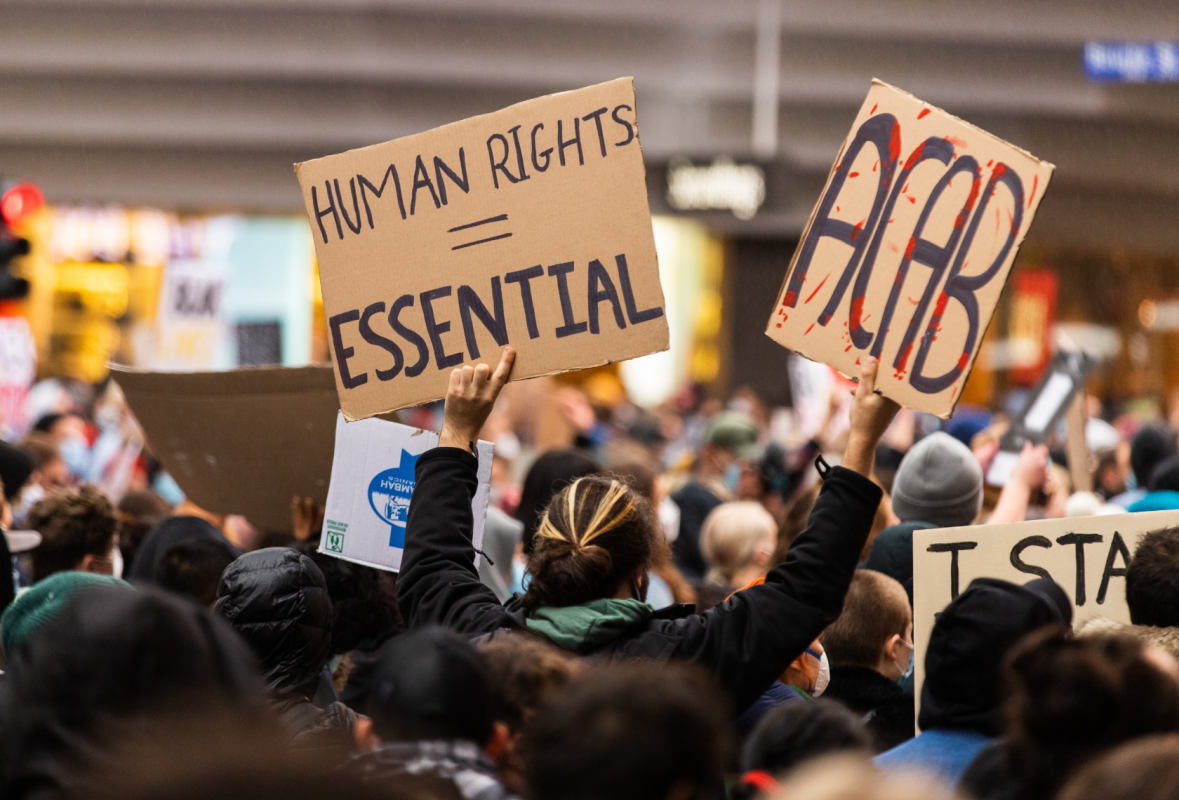In today’s fast-paced digital world, visuals speak louder than words. Whether it’s on social media, in magazines, or through online platforms, photographs have the power to capture attention, evoke emotions, and tell stories in ways that words alone often cannot. One of the most impactful ways to use photography for storytelling is through a photo essay.
A photo essay example can help us understand how a series of carefully curated images, often supported by short text or captions, can narrate a powerful story. From documenting global events and cultural traditions to capturing intimate personal moments, photo essays have become an essential medium in journalism, art, and education.
In this guide, we’ll explore what a photo essay is, why it matters, the different types you can create, how to plan one step by step, and real-life photo essay examples that inspire. Whether you’re a student, aspiring photographer, or content creator, this resource will give you everything you need to start crafting impactful photo essays of your own.
What is a Photo Essay?
A photo essay is a collection of photographs arranged in a sequence to tell a story, convey a message, or explore a theme. Unlike random snapshots or albums, a photo essay is intentional—it guides viewers through an idea, event, or emotion using the power of imagery.
The best way to understand this concept is to look at a photo essay example. Imagine a series of images showing the journey of a child going to school in a rural village. The photos could start with early morning routines, transition into the long walk through fields, capture the school day, and end with the return home. Together, these photos tell a complete story that words alone might not capture as vividly.
Photo essays can serve different purposes:
-
Personal Expression – capturing life milestones, family stories, or artistic ideas.
-
Journalistic Reporting – documenting real-world issues such as war, poverty, or climate change.
-
Educational & Cultural – showcasing traditions, lifestyles, and community practices.
Unlike a single photograph, which freezes a moment, a photo essay provides context, depth, and progression. It allows viewers to see not just one image but the “before and after” that brings a story to life.
Why Are Photo Essays Important?
In a world overflowing with information, grabbing someone’s attention is not easy. This is where photo essays shine. They go beyond words to create a visual narrative that resonates on a deeper emotional level.
Here’s why photo essays hold such importance:
-
Emotional Impact – A well-crafted photo essay can evoke empathy, joy, sadness, or hope. For instance, images of children affected by war or the beauty of untouched landscapes can stir powerful emotions.
-
Universal Language – Photographs break cultural and linguistic barriers. A photo essay can be understood by anyone, anywhere in the world, without the need for translation.
-
Awareness & Advocacy – Journalists and activists often use photo essays to shed light on social issues like poverty, education inequality, or climate change. These stories can mobilize people to take action.
-
Education & Documentation – From documenting traditions and lifestyles to showcasing historical events, photo essays serve as valuable records that preserve knowledge for future generations.
-
Personal Storytelling – On a smaller scale, individuals use photo essays to narrate personal experiences, whether it’s a wedding album designed as a story, a travel diary, or a personal growth journey.
Simply put, photo essays are powerful storytelling tools that combine the emotional depth of images with the clarity of structure. A single photo essay example can inspire, educate, and leave a lasting impression.
Types of Photo Essays
Not all photo essays are the same. Depending on the purpose, theme, and storytelling approach, there are several different types you can create. Below are some of the most popular categories with examples:
1. Narrative Photo Essays
-
Definition: These follow a story from beginning to end, much like a short film or written essay.
-
Example: A photo essay showing the recovery journey of an injured athlete, starting with the accident, followed by hospital care, rehabilitation, and finally returning to the field.
2. Thematic Photo Essays
-
Definition: Instead of telling a linear story, thematic essays revolve around a single idea or subject.
-
Example: A series of photos focused on street art across different cities, showcasing creativity, style, and cultural diversity.
3. Documentary Photo Essays
-
Definition: Often used in journalism, documentary essays capture real-life events and social issues.
-
Example: A photo essay covering the effects of deforestation in a village—contrasting lush forests in the past with barren land today.
4. Portrait Photo Essays
-
Definition: Focused on individuals or groups, these essays use faces and expressions to communicate stories.
-
Example: A series of portraits capturing the daily lives of fishermen along a coastal town, highlighting both struggles and traditions.
5. Artistic/Conceptual Photo Essays
-
Definition: These essays emphasize creativity and abstract themes, often blending photography with artistic expression.
-
Example: A black-and-white photo essay illustrating “loneliness” through empty streets, single chairs, and shadows.
6. Event-Based Photo Essays
-
Definition: These document important events, often used in journalism or personal storytelling.
-
Example: A wedding photo essay, capturing key moments from preparations to the final celebration.
Each photo essay example serves a unique purpose—some inform, others inspire, and some simply document moments in time. Choosing the right type depends on your goal and the story you wish to tell.
ur research. If it’s a social issue, understand the context. If it’s a personal story, outline the key moments.
-
Make a shot list: wide shots, close-ups, candid moments, and details.
-
Plan locations, timing (e.g., sunrise for dramatic light), and subjects.
Step 3: Decide on the Narrative Flow
A photo essay should have a beginning, middle, and end—even if it’s thematic.
-
Beginning: Introduce the setting or characters.
-
Middle: Show development, challenges, or details.
-
End: Provide closure or leave a strong impression.
Think of it like writing a short story but with images.
Step 4: Capture Emotions and Details
Great photo essays are built on emotions. Don’t just shoot the obvious—look for expressions, interactions, and tiny details that tell bigger stories.
-
Example: Instead of only showing a busy market, capture the smile of a vendor, the hands exchanging money, or the tired eyes at the end of the day.
Step 5: Edit and Arrange Your Photos
Once you have all your images, select the strongest ones that best convey your story. Less is often more—avoid clutter.
-
Arrange photos in sequence to create flow.
-
Mix wide shots (setting) with close-ups (details).
-
Remove repetitive or weak shots.
Step 6: Add Captions or Minimal Text (Optional)
While a photo essay should stand on its own, captions can enhance understanding.
-
Keep them short and informative.
-
Provide context when needed, but avoid over-explaining.
Step 7: Publish or Share Your Photo Essay
Decide where you want to showcase your work:
-
Online blogs, photography websites, or social media.
-
Photo magazines or exhibitions.
-
Personal portfolios or academic projects.
When publishing online, structure your essay in a clean, scroll-friendly format. Pair images with text where necessary and ensure the visuals load quickly for better engagement.
Real-Life Photo Essay Examples
To truly understand the impact of visual storytelling, it helps to look at actual photo essay examples. Each of the following showcases how a series of photographs can communicate messages, emotions, and experiences that words alone cannot.
1. Family Life Photo Essay

One of the most common yet powerful photo essay themes is family. A series capturing daily family life—morning routines, meals together, playtime, or even struggles—can be deeply moving. For example, a photographer documenting a grandparent’s bond with their grandchildren can highlight love, care, and generational wisdom. These images not only preserve memories but also connect with viewers who recognize similar moments in their own lives.
2. Travel and Cultural Photo Essay

Travel photo essays are some of the most engaging because they transport viewers to places they may never visit themselves. Imagine a collection showing the vibrant streets of Jaipur, the floating markets of Thailand, or the snowy villages of Switzerland. Each image highlights culture, architecture, people, and landscapes, giving the audience both information and inspiration. A travel photo essay example can serve as both storytelling and visual tourism.
3. Environmental Awareness Essay

Photography has long been a tool for advocacy, and environmental issues are often brought to light through photo essays. A striking example might show the transformation of a lush forest into barren land due to deforestation. Another could document marine pollution, contrasting images of clean beaches with plastic-choked shorelines. These powerful visual narratives make abstract issues more real and encourage viewers to take action.
4. Social Issues and Human Rights Photo Essay

Some of the most impactful photo essays highlight social inequality, injustice, or human resilience. For instance, a photographer could create an essay about child labor in developing countries—capturing children working, their living conditions, and their hopes for education. Such essays not only raise awareness but can also influence policy and spark global conversations. A famous photo essay example in this category is photojournalistic work on refugees, which humanizes statistics through personal stories.
5. Personal Growth and Transformation

Photo essays don’t always need to focus on global issues—they can also highlight individual journeys. A personal growth photo essay might follow someone through weight loss, recovery from illness, or learning a new skill over time. For instance, documenting the transformation of an artist from their first sketches to a gallery exhibition provides an inspiring visual narrative of persistence and growth.
6. Crisis and War Photography

Some of the most historic photo essays have come from times of crisis and war. Images from World War II, the Vietnam War, or more recent conflicts in the Middle East serve as reminders of human suffering and resilience. For example, a sequence showing civilians displaced from their homes, soldiers in combat, and communities rebuilding afterward tells a story of both devastation and survival. These essays remain etched in history books and collective memory.
7. Celebrations and Festivals
On a lighter note, celebrations make wonderful photo essay themes. Weddings, birthdays, cultural festivals, and public parades all offer rich opportunities for storytelling. A photo essay about Diwali in India, with its lights, rituals, and family gatherings, or Rio de Janeiro’s Carnival, with vibrant colors and dancing crowds, captures the spirit of joy and community.
These photo essay examples show how versatile this medium is—ranging from intimate family stories to global movements. Each one demonstrates how photos can transcend words to leave lasting impressions.
8. Family Life Photo Essay

Capturing everyday family routines—mealtimes, play, or quiet bonding moments—can be deeply moving. These images reflect love, connection, and shared experiences that resonate universally.
9. Generational Family Story

This essay focuses on multiple generations within the same family, highlighting traditions, changes, and shared values. A series showing grandparents, parents, and children together illustrates how family history and culture are passed down.
10. A Year of Growth
Perfect for documenting children, plants, or even personal projects. By photographing changes month by month, this essay shows progression and transformation over time.
11. Pet’s Life Journey

For pet lovers, a photo essay chronicling a pet’s life—from playful puppyhood to mature years—can be both heartwarming and relatable. It also connects strongly with audiences who see pets as family members.
12. Travel and Cultural Photo Essay

Transport viewers to new places by documenting traditions, festivals, architecture, or landscapes. A photo essay on Diwali, Carnival in Rio, or cherry blossom season in Japan captures both beauty and cultural depth.
13. Milestone Celebration

From weddings to graduations and birthdays, milestone photo essays preserve once-in-a-lifetime events. A sequence that captures anticipation, the main event, and emotional aftermath makes for a complete story.
14. Artistic Self-Portrait Project

A more creative approach, this type of essay uses self-portraits to explore identity, emotions, or artistic concepts. For example, a series of moody, styled self-portraits can communicate personal struggles or growth.
15. Before-and-After Story

Transformation is always engaging. A before-and-after photo essay could show home renovations, fitness journeys, or community development projects—making change visible through images.
16. Wildlife Wonders

Nature photography becomes powerful when arranged as a narrative. A wildlife essay could show the life of a bird species, from nesting to migration, or highlight the biodiversity of a forest ecosystem.
17. Honor a Parent’s Story

Documenting a parent’s journey—through old photos, daily routines, and portraits—creates a touching tribute. This essay can highlight personal history, sacrifices, and life lessons passed on to children.
18. Sports Team in Action

Sports photo essays capture energy, teamwork, and determination. Documenting a season of a local team—training, matches, victories, and defeats—tells a story of discipline and passion.
19. Environmental Awareness Essay

Contrast nature’s beauty with its destruction to highlight urgent issues like pollution, deforestation, or climate change. These photo essays often inspire action and raise awareness.
20. Social Issues and Human Rights

From poverty to education inequality, social photo essays spotlight pressing issues. Famous examples include essays on refugee crises and civil rights movements, which give a human face to statistics.
Tips for Making Your Photo Essay Stand Out
With millions of photos shared online every day, creating a photo essay that leaves a lasting impression requires more than just good photography. Here are some proven tips to elevate your work:
1. Focus on Storytelling, Not Just Pretty Pictures
A photo essay should communicate a message or theme. While technically perfect photos are great, they won’t hold attention unless they connect emotionally. Always ask yourself: Does this image move the story forward?
2. Be Authentic and Honest
The strongest essays often come from real, unfiltered moments. Whether you’re covering social issues or family stories, authenticity makes viewers trust your work and engage more deeply.
3. Use Variety in Your Shots
Mix wide shots, medium frames, and close-ups. Wide shots establish context, while close-ups capture emotions and details. This variety keeps viewers engaged and prevents monotony.
4. Pay Attention to Composition and Lighting
Composition guides the eye, and lighting sets the mood. Simple rules like the rule of thirds, leading lines, or using natural light can make your essay visually compelling.
5. Edit Ruthlessly
Less is often more. Select only the most impactful images that contribute to your narrative. Removing weaker shots ensures your essay feels polished and intentional.
6. Add Captions When Needed
While photos are powerful, sometimes a short caption provides essential context. Keep them concise—just enough to support the visual without overshadowing it.
By combining technical skill with strong storytelling, your photo essay will not only stand out but also resonate with viewers on a deeper level.
Common Mistakes to Avoid in a Photo Essay
Even with strong images, a photo essay can lose its impact if not executed properly. Here are some common mistakes to avoid:
1. Overcrowding with Too Many Images
A common error is including dozens of photos that dilute the story. Viewers lose interest if they feel overwhelmed. Instead, curate only the most powerful shots—usually 10 to 20 well-selected images are enough.
2. Lack of a Clear Theme or Message
If your essay doesn’t have a central idea, it will feel like a random collection of pictures. For example, documenting a festival without showing its essence—rituals, people, and emotions—will make the essay feel incomplete.
3. Ignoring Narrative Flow
Good photo essays have structure. Placing photos in random order can confuse viewers. Think about how you’d tell the story in person and mirror that sequence visually.
4. Forgetting the Audience
Your essay should resonate with viewers, not just you. Overly personal or abstract essays may confuse audiences if there’s no relatable element. Always ask: Will my audience understand the message?
5. Neglecting Captions or Context
While photos are central, sometimes a lack of captions leaves the audience guessing. For instance, showing an image of destruction without context may mislead viewers. A short caption can provide clarity.
By avoiding these mistakes, you’ll ensure your photo essay example delivers a clear, emotional, and memorable impact.
Conclusion
A photo essay is more than just a collection of images—it’s a form of storytelling that captures emotions, ideas, and experiences in ways words often cannot. From documenting social issues and cultural traditions to celebrating personal milestones, photo essays are versatile tools that speak to audiences across languages and borders.
Looking at a photo essay example helps us understand how a sequence of photos can guide viewers through a journey—whether it’s the daily life of a community, the devastation of an environmental crisis, or the joy of a festival. Each image serves as a chapter in a larger narrative, creating impact through both visuals and structure.
If you’re planning to create your own, remember to:
-
Start with a clear theme.
-
Plan and curate thoughtfully.
-
Capture emotions, not just scenes.
-
Edit and sequence carefully.
-
Add context where needed.
The power of a photo essay lies not in the number of images but in the strength of the story they collectively tell. So pick up your camera, choose a meaningful subject, and start building your own narrative through visuals. Who knows—your work might be the next photo essay example that inspires others around the world.
FAQs About Photo Essays
1. What is the purpose of a photo essay?
The main purpose of a photo essay is to tell a story or explore a theme using images. It goes beyond single photos to create depth, context, and emotional impact for the audience.
2. How many pictures should a photo essay have?
There’s no fixed rule, but most photo essays work best with 10–20 carefully selected images. Too few may feel incomplete, while too many can overwhelm viewers.
3. Can a photo essay have text?
Yes. While the focus is on visuals, captions or short text can provide essential context. However, text should complement—not overshadow—the images.
4. What makes a good photo essay?
A strong photo essay has a clear theme, emotional impact, narrative flow, and high-quality images. Variety in shots (wide, medium, close-up) also adds depth.
5. Where can I publish my photo essay?
You can publish online on blogs, photography websites, social media platforms, or pitch it to magazines and journals. Some photographers also showcase photo essays in exhibitions or portfolios.
6. What’s the difference between a photo essay and a photo album?
A photo album is a collection of pictures, usually organized by event or date, without a strong narrative. A photo essay, on the other hand, tells a cohesive story where every image serves a purpose in the sequence.





